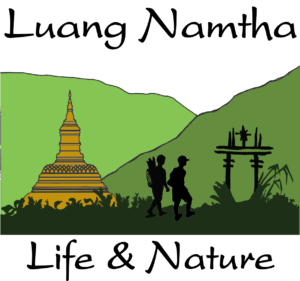Laos
The ancient kingdom of the Million of Elephants, which became the People Democratic Republic of Laos in 1975, is now open for tourism. Every year about 1,800,000 travelers cross its boundaries, which cannot be compared with the vast flow of tourists spreading throughout Thailand. So let’s discover the differences and originality which make up the charm of Laos.
Geography
Laos has a land area of 236,800 km2 with a north- south length of 1000 km. The Annamite mountain range crosses the north-west region while the Mekong river divides Laos with Thailand and Myanmar in the west. Navigable all year round, despite numerous reefs, the Mekong is the heart of the country with most of the arable land being along its banks.
Government
The republic democratic people party of Laos came to power in 1975. The regime is one of people democracy: a unique party. The executive power is controlled by the president (who currently is Mr Juommaly Xayyasone) and elected by the national assembly for a 5 year period. The president is assisted by the prime minister who, in turn, is in charge of the ministry council. The legislative power, guarantor of the constitution, is held by the national assembly, which consists of 85 representatives elected by the people for a term of 5 years.
Population
Laos is the least populated country in S.E. Asia around 6.9 million inhabitants. The population in the south of the country is relatively sparse, whilst the upper regions claim 80% of the inhabitants.
Economy
The largest economic activity is agriculture which provides a living for 80% of the population. The principal crop is rice but corn, tobacco, cotton and coffee are also grown. Livestock is generally concentrated around cattle, buffalo and pigs of which there are $US per head of each.
Religion Buddhism
The main religion is Buddhism. The Lao practice Theravada Buddhism which spread through Laos between the 14th and 17th century. The ideal situation is to reach Nirvana without going through reincarnation. So for the Lao doing good deeds rather than bad ensures salvation. The monks are held in high esteem and treated with great respect, when entering a religious place. Please observe the proper rules of dress. Women should wear a dress or at least a suitably long skirt and shoulders should be covered. For men, wearing long pants is recommended. Shoes must be removed at the temple entrance. If you have to sit down avoid pointing your feet forward. If your joints allow it, fold your legs beneath you and keep your feet towards your back.
Animist
In Laos, Buddhism and Animism exist side by side. The Lao people believe in “Phi” which means spirit, soul, and ghost. Any Laotian will tell you about “Phi” who visits during sleep. They are everywhere; good, bad, mischievous. In trees, animals, houses and people. The SE Asian version of a “genie”. To protect themselves and show respect, people build a “genie house”, a small altar which placed in a precise spot, in front of the house or in the garden. The “house” is always sheltered from the sun and offerings of food and drinks are made to keep the spirit pacified.
Safety
Vientiane and the rest of the country is a safe place, however a little common sense and caution should be applied. Do not leave unattended bags around 2 wheeled vehicles. Although minor crimes such as pick pocketing are rare, they can ruin your trip so be careful. When you drive a motor cycle, wear a helmet, even if it is hot.
Money
The official currency in Laos is Kip. Banknotes of 500 1,000/ 2,000/ 10,000/ 20,000/ 50,000 and 100,000are available, Thai baht and US dollars are freely accepted in big towns, but less so in rural areas. Banks are open from Monday to Friday from 8:30 to 15:30, as in Europe. Visa withdrawal comes with a charge of around 3% whilst most credit cards are accepted in high class hotels and a few shops and restaurants in Laos.
Climate
May to October is the rainy season. It does not rain constantly but a raincoat or umbrella might be a useful fashion accessory. November to May sees the dry season, bring a hat and sun cream. Winter woollies will be needed in the mornings and evenings during the months of December, January and February especially in the North where temperatures can drop below 10 degrees Celsius, polar conditions for Lao people.
Health
The health situation has improved significantly over the last few years although there is still a lot to do. Problems can be treated in a number of Vientiane hospitals (Mahosot, Setthathrirat and the international clinic) or in hospitals or dispensaries in the provinces. In serious cases or for practical reasons (insurance coverage for instance) you may prefer to be treated in Thailand at Nong Khai, Udon Thani or Khon Kaen.
Roads
Laos has 14,000 Km of road, 80% of which are not asphalted. The network, however, has been greatly improved. The North-South route: Luang Prabang-Vientiane-Pakse- Champasak is now of good quality as is the national road connecting Boten and Houyxay. An intrepid explorer’s paradise Presently very few road maps are available in Vientiane, Luang Prabang and some provincial capitals. As now the Boten Road to Houy Xai is the national road.
Time zones
Laos is 7 hours ahead of Greenwich Mean Time. Thus 12 noon in Vientiane is 1 AM in New York, 5 AM in London and 6 AM in Paris.
Working Hours
The Lao Government offices and banks are generally open Monday to Friday from 08:00-11:30 and 13:30-16:00 Shops and private businesses usually are open longer.






 Users Today : 67
Users Today : 67 This Month : 961
This Month : 961 This Year : 39594
This Year : 39594 Total Users : 85322
Total Users : 85322 Views Today : 172
Views Today : 172 Who's Online : 2
Who's Online : 2